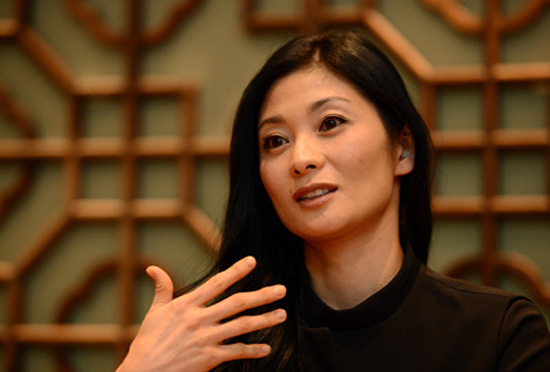- California Assembly OKs highest minimum wage in nation
- S. Korea unveils first graphic cigarette warnings
- US joins with South Korea, Japan in bid to deter North Korea
- LPGA golfer Chun In-gee finally back in action
- S. Korea won’t be top seed in final World Cup qualification round
- US men’s soccer misses 2nd straight Olympics
- US back on track in qualifying with 4-0 win over Guatemala
- High-intensity workout injuries spawn cottage industry
- CDC expands range of Zika mosquitoes into parts of Northeast
- Who knew? ‘The Walking Dead’ is helping families connect
Kang Sue-jin to lead Korea National Ballet
By Do Je-hae
After almost 30 years at the Stuttgart Ballet, prima ballerina Kang Sue-jin will return to her homeland next month to lead the Korea National Ballet (KNB). The culture ministry announced Kang’s appointment as successor to KNB artistic director Cho Tae-ji, Tuesday.
“The opportunity to do something for my country gives me great pleasure. I will do my best to upgrade Korean ballet,” Kang said in a statement. Her three-year tenure will be effective in January 2014.
Since joining the Stuttgart Ballet in 1986, the 46-year-old has been based in Germany and has not lived in Korea since she was a teenager. This was cited as a one of her weakness during the selection process for the next KNB chief in comparison to other major candidates.
The KNB, established in 1952, is the largest ballet company in the country. However, it still does not have its own school, an indispensable feature in many national ballet companies for nurturing star dancers and choreographers.
Kang plans to continue dancing even after she takes up her new post in Korea. Last month, she premiered “Madama Butterfly,” a work that was choreographed for her. The Innsbruck Dance Company will bring the production to Korea in July 2014, with Kang dancing the lead role in all of the three performances.
Earlier this year, the longtime principal of Germany’s Stuttgart Ballet published her first autobiography “I Do Not Wait for Tomorrow.” It is an account of how a young girl from Korea moved to Monaco by herself at 13 for ballet training and eventually became a principal dancer at one of the most prestigious European ballet companies.
Kang entered the Stuttgart Ballet at 18, becoming the youngest member in the history of the company and the first Asian to join. She is one of eight female principals at the company.
She was also the first Asian laureate of the Prix de Lausanne. Among her many honors and achievements she was named “Kammertanzerin” or chamber dancer, the highest recognition the German government bestows on a dancer.













![일본 사도광산 [서경덕 교수 제공. 재판매 및 DB 금지]](http://www.koreatimesus.com/wp-content/uploads/2024/07/PYH2024072610800050400_P4-copy-120x134.jpg)


